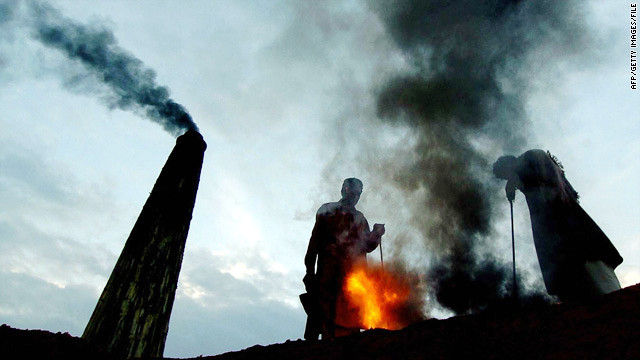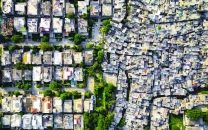Quetta, Peshawar, Lahore among the most polluted cities of the world: WHO
The WHO's health guidelines list Quetta at fourth, Peshawar on sixth and Lahore on tenth as most polluted cities.

The pollution is measured as the microgramme (mcg) concentration per cubic metre of air of particulate matter smaller than 10 micrometres (PM10) -- about a seventh of the width of a human hair. PHOTO: AFP/FILE
Although Paris has leapt into the headlines over an alert for dangerous atmospheric particles, it does not ordinarily count among the world's most polluted cities.
According to a 2011 World Health Organisation (WHO) report Quetta shares fourth place on the most polluted city list along with Ludhiana, India. Peshawar and Lahore also make it to the top 10 list.
The pollution is measured as the microgramme (mcg) concentration per cubic metre of air of particulate matter smaller than 10 micrometres (PM10) -- about a seventh of the width of a human hair.
The figures are the average for the year. Seasonal spikes can be many times higher.
The WHO's health guidelines are maximum exposure of 20 mcg/m3, measured as an annual average.
Here are the top 10 cities for which data is available.
1) Ahvaz, Iran 372 mcg/m3 (2009 data)
2) Ulan Bator, Mongolia 279 mcg/m3 (2008 data)

Ulan Bator. PHOTO: WIKIPEDIA
3) Sanandaj, Iran 254 mcg/m3 (2009 data)
4) Ludhiana, India (2008 data) and Quetta, Pakistan (2003/4 data) tied at 251 mcg/m3

Quetta. PHOTO: BANARAS KHAN
5) Kermanshah, Iran 229 mcg/m3 (2009 data)
6) Peshawar, Pakistan 219 mcg/m3 (2003/4 data)

Peshawar. PHOTO: AFP
7) Gaborone, Botswana 216 mcg/m3 (2005 data)
8) Yasuj, Iran 215 mcg/m3 (2009 data)
9) Kanpur, India 209 mcg/m3 (2008 data)

Kanpur. PHOTO: REUTERS
10) Lahore, Pakistan 200 mcg/m3 (2003/4 data)

Minar-e-Pakistan. PHOTO: EXPRESS
Paris, whose levels hit a high of 180 mcg/m3 last week, has an annual mean level of 38 mcg/m3 according to 2008 data.

Paris. PHOTO: REUTERS
Beijing, which has also been in the news over smothering smog, is listed with an annual mean figure of 121 mcg/m3.

Beijing PHOTO: REUTERS
The Middle East and North Africa is the world's most polluted region with an annual mean level well over 130 mcg/m3, followed by Southeast Asia with a level near 100 mcg/m3.
The UN's health body estimates more than two million people die every year from breathing indoor and outdoor particle pollution.
Particles are released by burning petrol and diesel for car and motorcycle combustion, or coal, fuel wood, charcoal and animal waste for heating and cooking.
Weather conditions can drastically affect pollution levels, as in Paris where particles were trapped by a high pressure system causing sunny days and cold nights, with little wind.
Particulate pollution is also measured by levels of particles called PM2.5.
Measuring less than 2.5 mcg, or about a 30th the width of a human hair, these can penetrate deep into the lungs and are often made from more toxic materials than PM10.
Other pollution yardsticks are gases -- ozone, sulphur dioxide and nitrogen oxide that are potential irritants of the airways or eyes.



















COMMENTS
Comments are moderated and generally will be posted if they are on-topic and not abusive.
For more information, please see our Comments FAQ